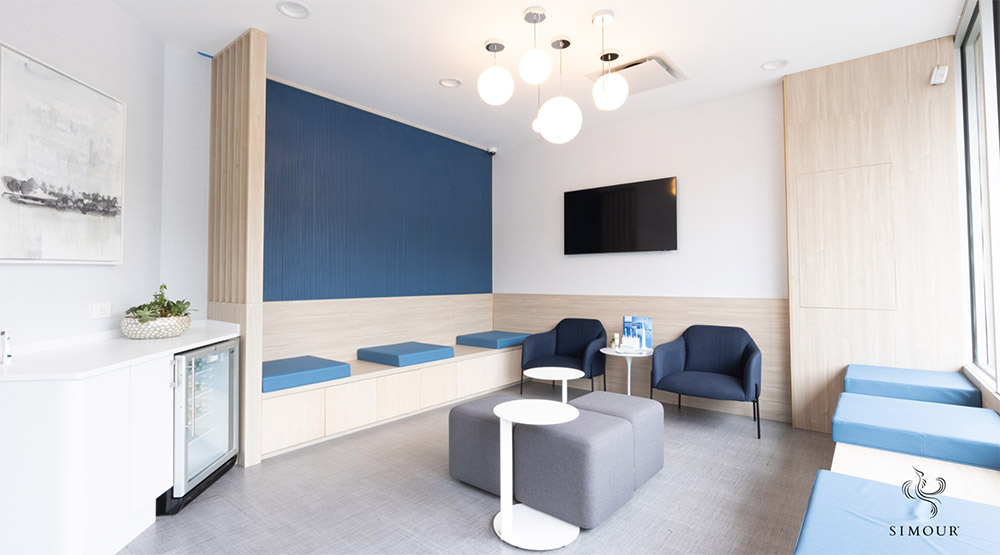“The investment in knowledge pays the best interest.” — Benjamin Franklin
Explore the vibrant world of healthcare with abundant opportunities. The game has changed—old investment methods won’t cut it. Upgrade your approach for today’s fast-paced advancements. Enter the scene armed with interior design—a growth catalyst and your secret weapon for profitable healthcare investments.
Imagine this: you’re not just investing; you’re crafting a master plan. By unleashing innovative design strategies, you’re not only shaking things up, but you’re also causing a seismic shift. Patients’ lives are getting better, your returns are soaring, and you’re making waves in the industry. Curious about how to make all this happen? That’s what this blog’s all about. We’re diving into the nitty-gritty, exploring the killer strategies that’ll make your private equity firm a design-driven force to be reckoned with in the healthcare sector. Read more below:
1. Inspire Loyalty through Patient-Centric Design
A patient-centric approach lies at the heart of successful healthcare businesses. Private equity firms can create value by investing in healthcare companies that prioritize patient experience through thoughtful design. By employing design thinking methodologies, firms can identify friction and streamline processes, ultimately enhancing patient satisfaction and accruing loyalty in the process. This design-driven approach can encompass various aspects, such as designing user-friendly digital platforms for scheduling appointments, implementing intuitive and accessible electronic health records systems, and optimizing healthcare facility layouts to improve patient flow and comfort. The key is to make the process as painless for the patients as possible. By embracing patient-centric design, private equity firms can transform healthcare companies into trusted brands that provide exceptional care and elevate the overall patient experience.
2. Finding Innovations through a Human-Centered Approach
Human-centered design places the needs and experiences of patients, providers, and other stakeholders at the core of decision-making. By adopting this approach, private equity firms can identify unmet needs, pain points, and opportunities for innovation. Investing in design research, such as ethnographic studies and user interviews, can provide valuable insights into user behaviors and preferences, leading to the development of patient-centric solutions. Innovations can include technological platforms that can help empower patients with their medical care, and management, and even as mechanisms for feedback. The innovation potential is immense whether it’s improving the patient experience, streamlining workflows, or enhancing the usability of medical devices. A human-centered design approach fosters innovation that delivers measurable value.
3. Harness Technology for optimization and Efficiency
The rapid advancement of technology offers immense opportunities for private equity firms to drive value creation in the healthcare sector. Investing in digital innovation enables firms to optimize operational efficiency, enhance clinical outcomes, and improve patient engagement. Through design-led digital transformations, private equity firms can fund and support the development of innovative solutions such as telemedicine platforms, remote patient monitoring systems, and AI-powered diagnostic tools. These technologies not only improve access to healthcare but also empower patients to take a more proactive role in managing their health.
Operational efficiency is a critical aspect of value creation in the healthcare sector. Private equity firms can unlock significant value by applying design principles to streamline processes and eliminate waste. By conducting in-depth process analysis and reengineering, firms can identify bottlenecks and inefficiencies, leading to cost reduction and improved productivity. Design-led process optimization can involve redesigning administrative workflows, implementing lean methodologies, and leveraging automation technologies to enhance efficiency and accuracy.
Additionally, private equity investors can partner with healthcare companies to revamp their existing digital interfaces, making them more intuitive, responsive, and personalized. By streamlining processes, reducing waste, and improving resource allocation, private equity firms can unlock substantial value and generate higher returns on investment. Furthermore, the integration of technology, automation, and data-driven decision-making can further enhance operational excellence.
Ready to revolutionize your private equity game in healthcare? Dive into the world of interior design with us! Discover how patient-centric spaces, digital innovation, and process optimization can supercharge your growth and patient outcomes. Let’s take your healthcare investments to new heights with our proven interior design process. Sign up for a discovery call today!




